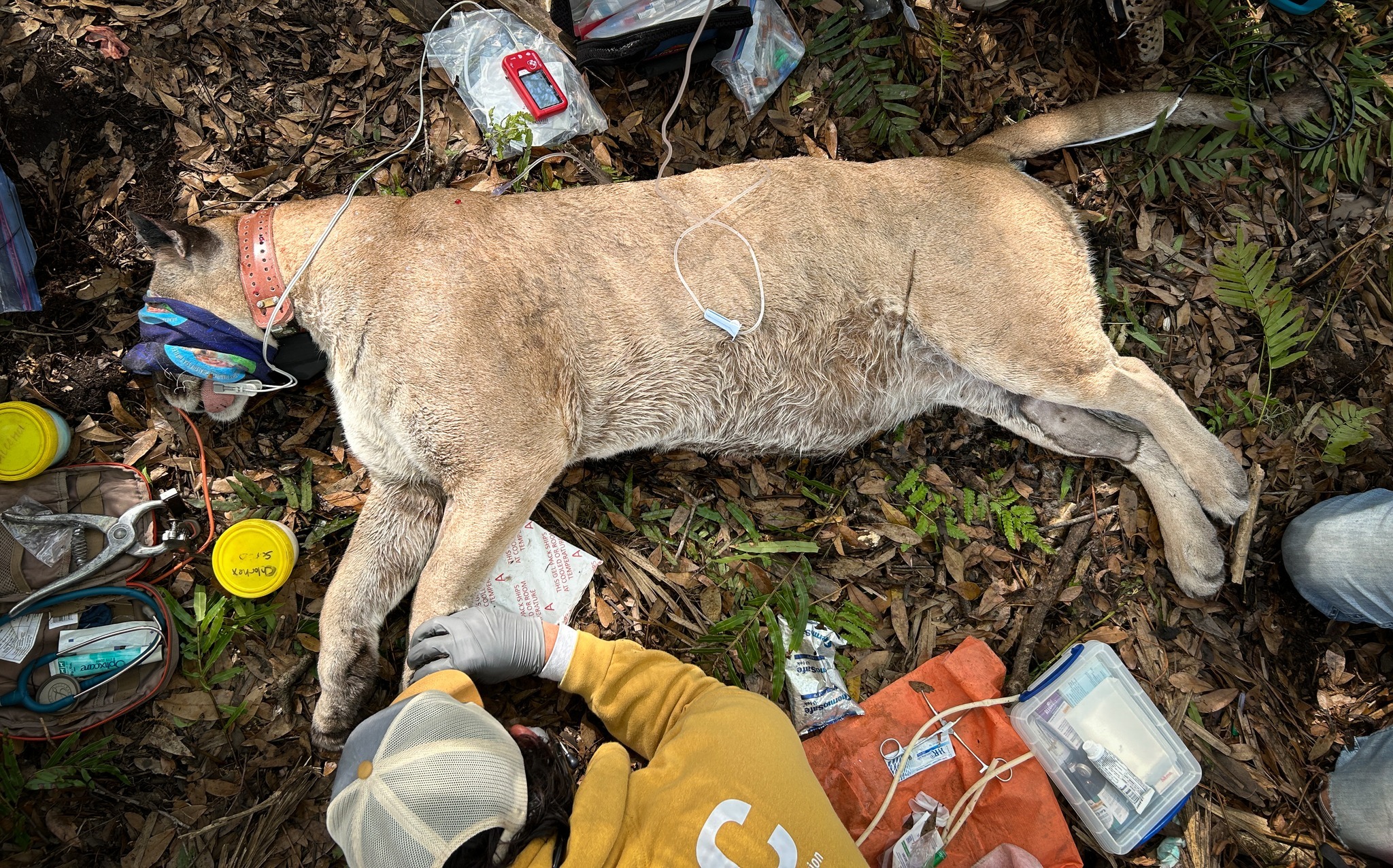
Florida Fish and Wildlife Conservation Commission (FWC) biologists recently captured and collared the heaviest Florida panther ever recorded, an adult male weighing 166 pounds, FWC announced.
Typically, male Florida panthers weigh an average of 100–160 pounds, while females weigh 70–100 pounds.
As part of the collaring process, biologists conducted a comprehensive health assessment, which included blood tests and tissue sample collection for genetic analysis. The GPS collars placed on the panthers allow researchers to track their movement patterns, survival rates, reproduction, and habitat use. These data-driven insights play a critical role in shaping science-based management strategies to aid in the species’ recovery.
This effort is part of a long-term research program that monitors panther movements, health and population dynamics. This project provides essential data for conservation efforts on the endangered Florida panther.
According to the FWC website, Florida panthers are the larger of the state’s two native wild cat species, alongside bobcats.
While the species has been documented throughout much of Florida and even into Georgia, its core population is concentrated south of Lake Okeechobee.
Listed as endangered under the Endangered Species Act, Florida panthers are protected by law, making it illegal to harm or harass them.
Current estimates place the adult panther population between 120 and 230 individuals.
Copyright 2023-2025 FloridaWord.com